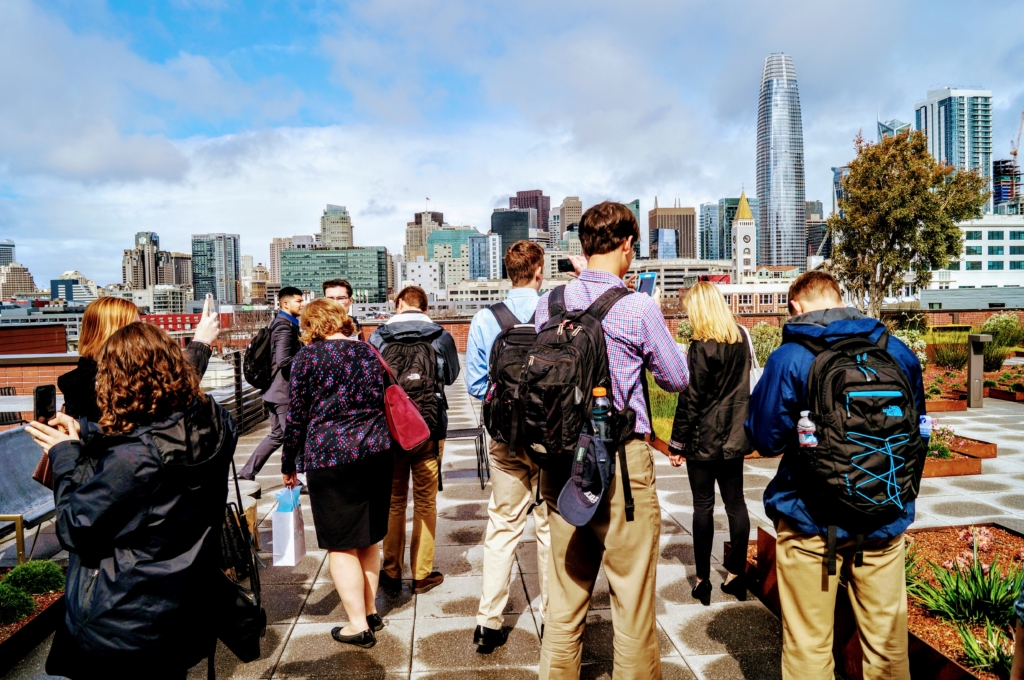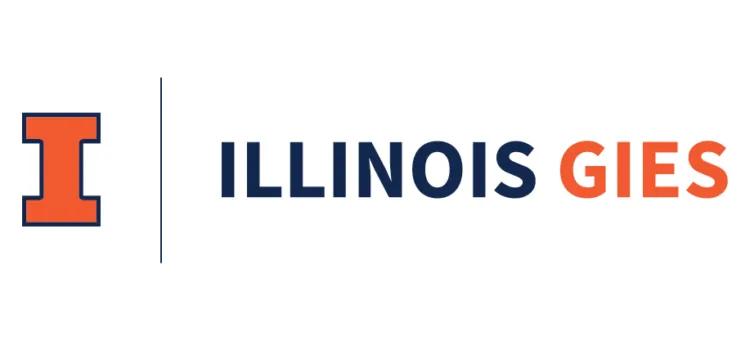
Kenan-Flagler students explore the rooftop office space at Dropbox headquarters in San Francisco, one of the cities attracting the most college-educated millennials. Photo by Nathan Allen
The millennial generation is now the largest in American history. At 75 million strong, the generation, which ranges in age from 18 to 34, has officially surpassed the post-World War Baby Boomers. They are also the most diverse generation in American history, with demographic and geographic patterns that paint a picture for the future of work and life in the country.
Last month, the Brookings Institute released The Millennial Generation: A demographic bridge to America’s diverse future, which examines the demographics, economic statuses, moving patterns, and education levels of older millennials, aged 25 to 34. Overall, the research, written by William Frey, shows college-educated millennials are flocking to bigger coastal cities like New York and San Francisco. But it also shows high percentages of college grads spending time in towns all over the U.S., including Madison, Wisconsin, Minneapolis, Minnesota, and Denver, Colorado.
As far as the proportion of college-educated millennials compared to overall millennial population, Boston and Madison have the highest rates among the country’s 100 largest metropolitan areas, at 58%. Up next are California’s two Bay Area cities of San Francisco and San Jose, each with 55% of millennials with college education. The only other metro area with more than half of its millennials possessing a college degree is Washington, D.C. at 54%.
Interestingly, while California is home to some of the most educated urban areas in the country, it is also home to some of the least educated. Four metro areas in California’s inland Central Valley take the top four spots for the metro areas with the fewest college degrees among its millennials. Bakersfield, in the southern portion of the Central Valley has the bottom spot with just 14% of college educated millennials. Next is Stockton, which is just over the Coast Range from the Bay Area with 17% and Riverside, just outside of Los Angeles, also with 17%. Fresno rounds out the top four with 18%. Three other metro areas in the bottom 10 are in Florida with Lakeland (19%), Cape Coral (20%), and North Port-Sarasota (24%).
Brookings also tracked poverty rates among millennials in the nation’s largest metro areas and there is at least a bit of correlation between education levels and socioeconomic status. Half of the metro areas with the fewest millennials in poverty are also metro areas that were in the top ten for highly educated millennials. San Jose has the lowest poverty rate with just 7% of the millennial population being in poverty. Ogden, Utah and Washington D.C. followed, both at 9%. Minneapolis and the agricultural area of Oxnard, California — between Los Angeles and Santa Barbara — both had a poverty rate of 10%. The other two cities with top ten high education to make the list are Denver and San Francisco, both with an 11% poverty rate.
Similarly, many of the metro areas with the lowest rates of college-educated millennials are also on the list of 10 cities with the most millennials living in poverty. The top three cities for millennials in poverty — McAllen, Texas (31%), Bakersfield (28%), and Fresno (26%) — are all on the list of cities with the most non-college-educated millennials. Spokane, Washington and Knoxville, Tennessee round out the top five, each with 23% of millennials currently living in poverty.
The poverty charts also shows the growing political and policy divides among the two West Coast states of Washington and California. While the coastal regions of those states (Los Angeles, San Francisco Bay Area, and Seattle) are Democratic strongholds, the inland portions of the West Coast (Bakersfield, Fresno, Spokane) tend to be Republican-leaning. As millennials continue to grow older and influence state-level policies and businesses, a coming together will likely have to occur between the generally wealthy and educated coastal communities and poorer and less-educated inland metro areas.
DON’T MISS: SCHOOLS WITH THE MOST CONSERVATIVE, LIBERAL STUDENTS or WHICH COLLEGES HAVE THE HAPPIEST STUDENTS?










